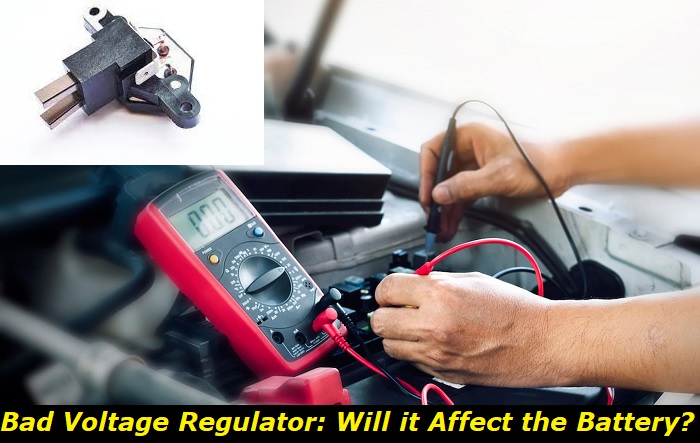The alternator works with the help of the voltage regulator. It changes the voltage in the system when needed. If the voltage regulator is faulty, the car battery will likely be drained soon because it doesn't get charged as it should. Also, it may lead to many other unpleasant situations with your vehicle.
Dead car battery highlights
- Average lifespan:4 - 5 years
- Voltage range:less than 10 volts
- Symptoms:no crank, no lights
- Reasons:complete discharge, age, hard use
- Prevention:regular charging
- DIY fix:possible
- How much to fix?$0 - $250

Voltage regulator and battery - how are they connected?
The battery in your car has one major role - to start the engine. Once the engine starts, the alternator kicks in and it does all the needed work for the power supply in the vehicle. But the alternator needs to send different voltage to different units and also the voltage is not standard - it may be 14.5 volts to the battery and 5 volts to some electronic units.
For this, the alternator uses the voltage regulator. This is a small device that is pretty simple but very important in the electrical system of your car. It limits the voltage that the alternator produces.
Here's how the system works:
- the battery cranks the starter motor and the engine starts;
- once it starts, it drives the serpentine belt which, in turn, drives the alternator;
- the alternator produces power and sends it to the electrical system of your car;
- the power is regulated by the voltage regulator;
- usually, the alternator produces over 14 volts to allow the battery to charge;
- once the battery is charged, the voltage regulator limits the voltage to 12-12.5 volts.
This is how the charging system works in your vehicle. If something goes wrong in the system, the ECU may throw a code and an error message saying that there is a problem with the charging system. This error message is one of the most common warnings that people may see on the dashes of all modern cars.
How can a broken voltage regulator kill the battery?
So, the voltage regulator is the part of the charging system. The charging system is responsible for charging the battery whenever the engine is running. The optimal voltage for charging the battery is more than 14 volts and this is exactly what the healthy voltage regulator offers once the engine starts.
But if the voltage regulator is faulty and it can't provide the system with the optimal voltage, then the battery will not properly charge. Very often, the system keeps running at 12 volts and it's OK for all the modules and units of the car. But it's not OK for the battery.
Here's what happens, in this case:
- the voltage regulator doesn't supply the system with the needed 14 volts of power;
- the system keeps working pretty well at 12 volts but the battery doesn't get charged;
- it doesn't kill the battery and sometimes it doesn't even trigger the battery light on your dash;
- this will work for some time - you may start the engine ten of twenty times till the battery is dead;
- as the battery doesn't get any additional support from the alternator and charging system, it will just die after some time.
Now you see that the 12V battery needs 14 or more volts to get charged. Whenever the voltage is low, the battery will degrade pretty fast. Just in several weeks or even days, you will notice that the engine cranks so lazily that it barely starts. This is the edge of the no-start problem because of low battery power.
In this case, you should not only recharge the battery but also check the voltage regulator. Very often, it will require replacement.
Final thoughts
Now you see that the voltage regulator can kill the battery in your car. Also, in this article, I tried to show the chain of events that happens when the voltage regulator goes bad. Whenever you spot a problem with the 12V battery that you replaced less than 4-5 years ago, you should check if it's charged properly by the alternator.
Make sure that the voltage regulator is working and adjusting the voltage to the needs of the battery and the entire electrical system of your car.
About the authors
The CarAraC research team is composed of seasoned auto mechanics and automotive industry professionals, including individuals with advanced degrees and certifications in their field. Our team members boast prestigious credentials, reflecting their extensive knowledge and skills. These qualifications include: IMI: Institute of the Motor Industry, ASE-Certified Master Automobile Technicians; Coventry University, Graduate of MA in Automotive Journalism; Politecnico di Torino, Italy, MS Automotive Engineering; Ss. Cyril and Methodius University in Skopje, Mechanical University in Skopje; TOC Automotive College; DHA Suffa University, Department of Mechanical Engineering






Add comment